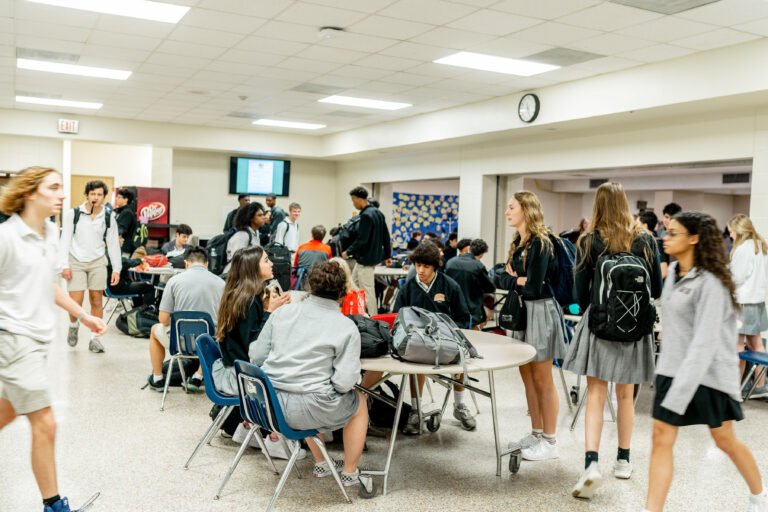Tips for Finding Work as an International Student in the USA
Navigating the US work visa process can be a daunting task for international students looking to gain work experience in the United States. Understanding the legal requirements is crucial in order to successfully obtain a work visa and pursue employment opportunities in the US. There are several different types of work visas available to international students, each with its own set of eligibility requirements and application processes.
It is important for students to familiarize themselves with the various visa options, such as the H-1B visa for specialty occupations, the J-1 visa for exchange visitors, and the F-1 visa for optional practical training (OPT) and curricular practical training (CPT).
In addition to understanding the different types of work visas, international students must also be aware of the legal requirements and restrictions associated with each visa. For example, the H-1B visa requires sponsorship from an employer and is subject to an annual cap, while the J-1 visa may have specific requirements related to the student’s academic program and intended employment.
Navigating the US work visa process also involves staying informed about any changes to immigration laws and policies, as well as seeking guidance from immigration attorneys or advisors at the university’s international student office. By understanding the legal requirements and processes associated with obtaining a work visa, international students can better prepare themselves for pursuing employment opportunities in the US.
Leveraging Campus Resources: Utilizing Career Services and Internship Programs
Leveraging campus resources is essential for international students seeking employment opportunities in the United States. Career services offices and internship programs at universities can provide valuable support and guidance to help students navigate the job search process and gain practical work experience.
Career services offices offer a range of resources, including resume and cover letter assistance, interview preparation workshops, and networking events with employers. These services can help international students tailor their job search strategies to the US market and gain a better understanding of the professional expectations and norms in the country.
Internship programs are another valuable resource for international students looking to gain hands-on experience in their field of study. Many universities offer internship programs that allow students to work with US-based companies and organizations, providing them with valuable exposure to the US work environment and industry practices.
By participating in internship programs, international students can build their professional skills, expand their professional network, and gain practical experience that can enhance their resume and make them more competitive in the job market. Leveraging campus resources such as career services and internship programs can greatly benefit international students as they pursue employment opportunities in the US.
Networking Strategies: Building Professional Connections in the US
Building professional connections is a key strategy for international students seeking employment opportunities in the United States. Networking can help students expand their professional network, gain insights into the US job market, and uncover hidden job opportunities. There are several effective networking strategies that international students can utilize to build professional connections in the US.
Attending career fairs, industry conferences, and networking events can provide students with valuable opportunities to meet potential employers, industry professionals, and other like-minded individuals. These events can also help students gain a better understanding of the US work culture and industry trends.
In addition to attending networking events, international students can also leverage online networking platforms such as LinkedIn to connect with professionals in their field of study. Building a strong online presence and engaging with industry professionals through social media can help students expand their professional network and stay informed about job opportunities in the US.
Another effective networking strategy for international students is reaching out to alumni from their university who are currently working in the US. Alumni can provide valuable insights and advice on navigating the US job market, as well as potential job leads and referrals. By implementing these networking strategies, international students can build professional connections in the US that can open doors to employment opportunities and career advancement.
Exploring Off-Campus Employment Options: Understanding Curricular Practical Training (CPT) and Optional Practical Training (OPT)
Understanding curricular practical training (CPT) and optional practical training (OPT) is essential for international students looking to explore off-campus employment options in the United States. CPT is a type of off-campus employment authorization that allows students to gain practical work experience related to their field of study while still enrolled in their academic program.
CPT is typically used for internships, co-op programs, or other types of work experience that are required or recommended by the student’s academic program. On the other hand, OPT is a temporary employment authorization that allows students to work in their field of study for up to 12 months after completing their academic program.
By understanding CPT and OPT, international students can take advantage of these off-campus employment options to gain valuable work experience in the US. However, it is important for students to be aware of the eligibility requirements and application processes associated with CPT and OPT, as well as any restrictions or limitations that may apply.
Seeking guidance from advisors at the university’s international student office can help students navigate the CPT and OPT application processes and ensure compliance with immigration regulations. By exploring off-campus employment options such as CPT and OPT, international students can gain practical work experience in their field of study while pursuing employment opportunities in the US.
Tailoring Your Resume and Cover Letter: Highlighting Your International Experience
Tailoring your resume and cover letter is crucial for international students looking to highlight their international experience and stand out to potential employers in the United States. International students should emphasize their unique skills, experiences, and perspectives gained from studying abroad or living in different countries.
This may include language proficiency, cross-cultural communication skills, adaptability, and a global mindset that can bring added value to employers seeking diverse talent. When tailoring their resume and cover letter, international students should also consider formatting differences, such as using a chronological resume style commonly used in the US job market.
In addition to highlighting their international experience, international students should also focus on showcasing their relevant skills, qualifications, and accomplishments that are aligned with the job requirements. This may involve customizing their resume and cover letter for each job application to emphasize how their background and experiences make them a strong fit for the position.
Seeking feedback from career services advisors or mentors can also help international students fine-tune their resume and cover letter to effectively communicate their unique value proposition to potential employers. By tailoring their resume and cover letter to highlight their international experience and relevant qualifications, international students can increase their chances of securing employment opportunities in the US.
Interview Preparation: Showcasing Your Skills and Cultural Competence
Showcasing your skills and cultural competence during interviews is essential for international students seeking employment opportunities in the United States. Interview preparation involves not only practicing common interview questions and responses but also demonstrating cultural competence and an understanding of the US work environment.
International students should be prepared to discuss their international experiences, cross-cultural communication skills, adaptability, and ability to work effectively in diverse teams. They should also be ready to provide examples of how they have successfully navigated cultural differences or challenges in previous work or academic settings.
In addition to showcasing their cultural competence, international students should also focus on highlighting their relevant skills, qualifications, and accomplishments during interviews. This may involve preparing specific examples or stories that demonstrate their problem-solving abilities, leadership potential, teamwork skills, or other competencies that are valued by employers in the US.
Interview preparation should also include researching the company or organization, understanding its culture and values, and being able to articulate how one’s skills and experiences align with the company’s mission and goals. By showcasing their skills and cultural competence during interviews, international students can make a positive impression on potential employers and increase their chances of securing employment opportunities in the US.
Navigating Cultural Differences: Adapting to the US Work Environment
Adapting to the US work environment involves navigating cultural differences and understanding the professional expectations and norms in the United States. International students should be prepared to adapt to new communication styles, workplace etiquette, team dynamics, and management practices that may differ from those in their home country. This may include being aware of cultural nuances in verbal and nonverbal communication, understanding hierarchical structures within organizations, or adapting to different approaches to decision-making or conflict resolution.
In addition to adapting to cultural differences, international students should also seek opportunities to learn about US workplace culture through internships, part-time jobs, or volunteer experiences. This can provide valuable exposure to the US work environment and help students gain insights into professional practices, industry standards, and workplace dynamics.
Seeking mentorship from professionals or colleagues who are familiar with the US work culture can also help international students navigate cultural differences and acclimate to their new professional environment. By adapting to cultural differences and proactively seeking opportunities for learning and growth, international students can successfully integrate into the US work environment and thrive in their employment pursuits.
Read Also: How International Students Can Secure Student Loan in the USA
Conclusion
Navigating the US work visa process, leveraging campus resources, building professional connections through networking strategies, exploring off-campus employment options such as CPT and OPT, tailoring resumes and cover letters to highlight international experience, preparing for interviews by showcasing skills and cultural competence, and adapting to cultural differences are all essential components of pursuing employment opportunities as an international student in the United States.
By understanding these key aspects of the job search process and taking proactive steps to prepare for success in the US job market, international students can increase their chances of securing meaningful employment opportunities that align with their career goals and aspirations.







